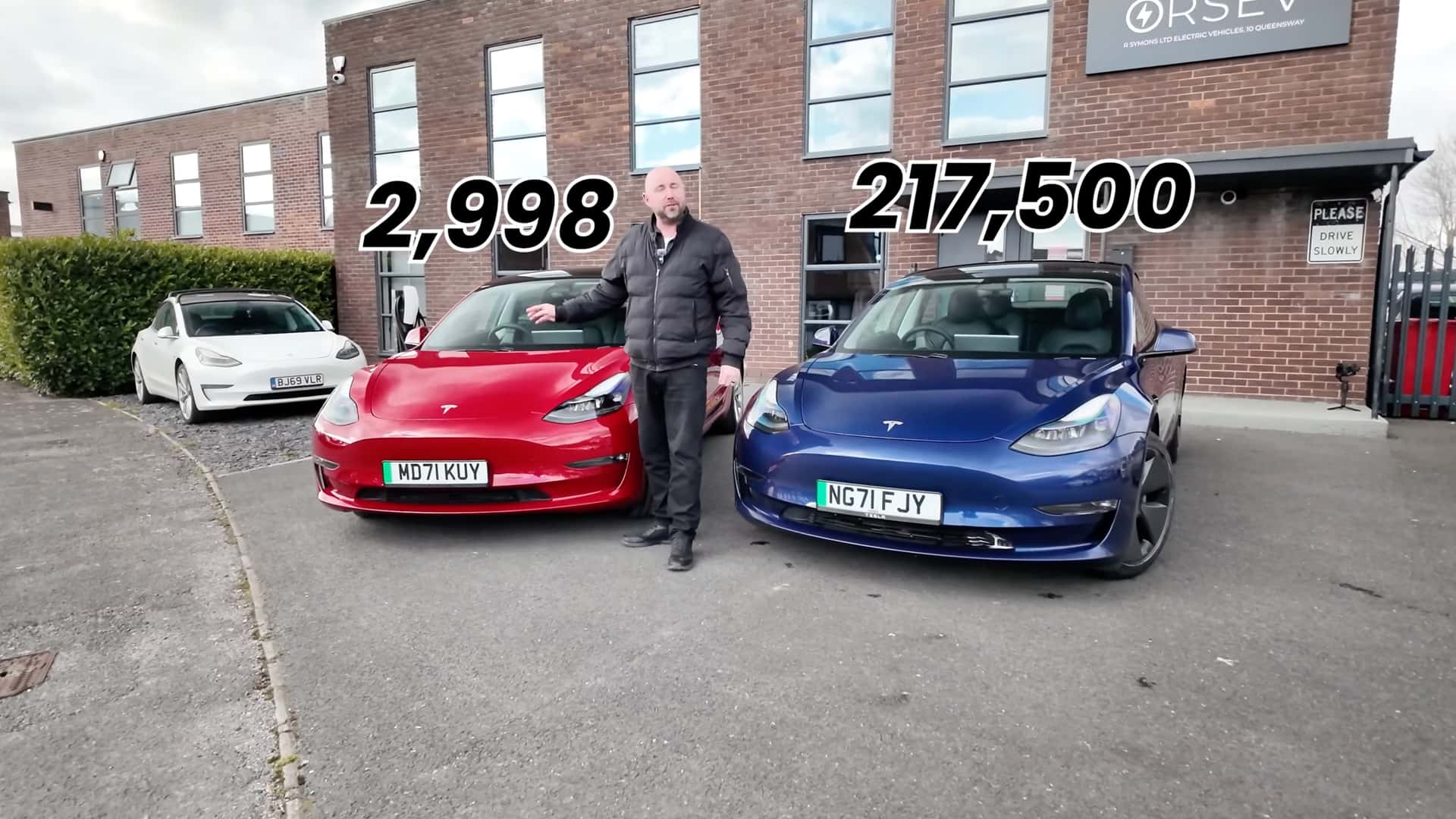
Here's my favorite thing about modern EVs: The batteries last longer than most cars. It's the best sign of hope that—once initial kinks are sorted out—EVs have the potential to be far more reliable than internal-combustion cars. I've written about this before, but a new video from RSEV provides more evidence that this simply ain't an issue.
In it, they compare a 3-year old red Tesla Model 3 with 2,995 miles to a blue one with 217,500 miles. The blue car had a much harder life, racking up tons of mileage and fast-charging sessions as a taxi. You'd expect heavy degradation or, if you're a skeptic, maybe a battery failure after so many miles. But you'd be wrong. After traveling as many miles as the average American drives in 16 years, the Model 3 still has 88.5% battery capacity and over 300 miles of real-world range.
That's exceptional news when you consider how batteries degrade. The steepest part of the degradation curve is the first year or two, or the first 20,000 miles. During that time, you can see up to 10% degradation. After that, though, the battery becomes remarkably stable, losing less over the next 150,000 miles than you lost in the first 20,000 miles. More importantly, battery failure is uncommon and even rarer. So if we can reach a future where the powertrain in every car on sale is basically guaranteed to survive 200,000 miles in the real world, we'll be ahead of where we are now, where only certain brands and vehicles can get there without costly repairs.
There's also good news in this video if you don't drive much. Because EVs lose so much capacity in their first year, I expected the 2,998-mile Tesla to still have some significant degradation over the first few years. But no, it basically hasn't lost anything. Its battery is showing 99.5% of its original capacity.
There's good news beyond the battery for the high-mileage blue car, too. The host reports that the only repair it's needed from Tesla itself is one of the O-rings on the tailgate struts. Everything else has survived well, with even the seat bolsters fairing better than 99% of the 200,000-mile cars I look at on Craigslist every day. The rear seat is holding up great, too, no small feat for a taxi.
It's encouraging to see, as Tesla got off to a rough start with the Model 3. It was plagued with quality issues. Over time, however, the company has consistently improved build quality. While early Model 3s had leaking glass and bumpers that fell off in the rain, newer models can go 200,000 miles without even getting rattly.
So if you're worried about your EV's longevity, here's yet another sign that things are going to work out ok. Most automakers will still have teething issues with new EVs, but after a few years of working out the kinks, these things are going to be way more reliable than the average internal-combustion car.
Contact the author: Mack.Hogan@insideevs.com.







